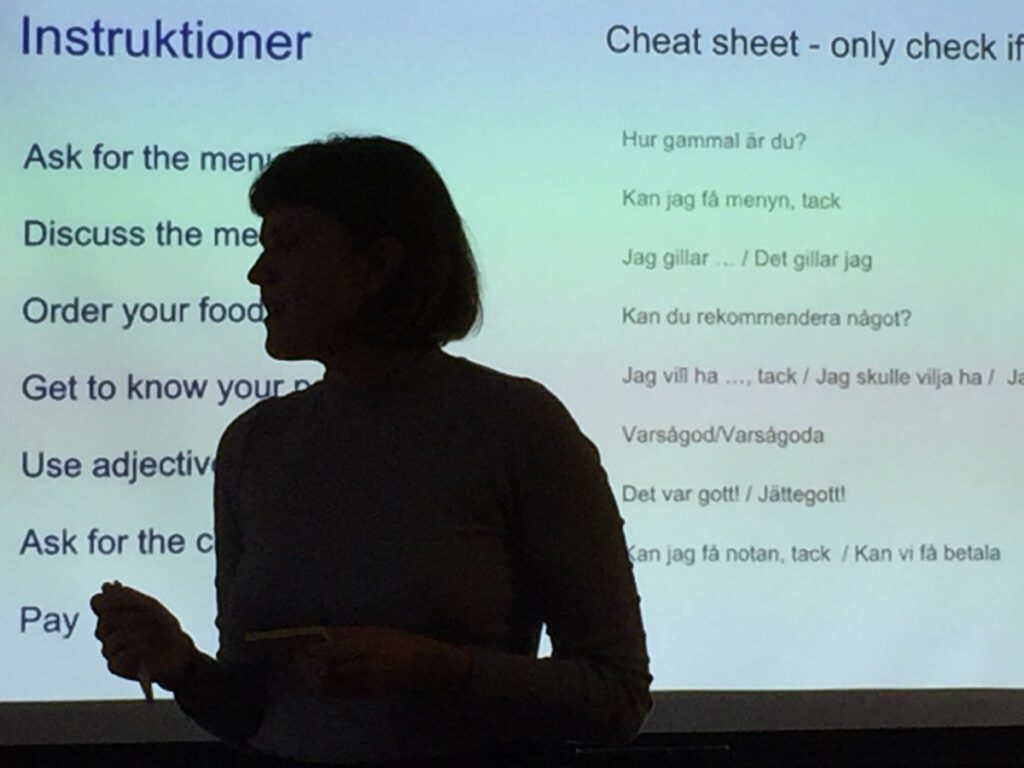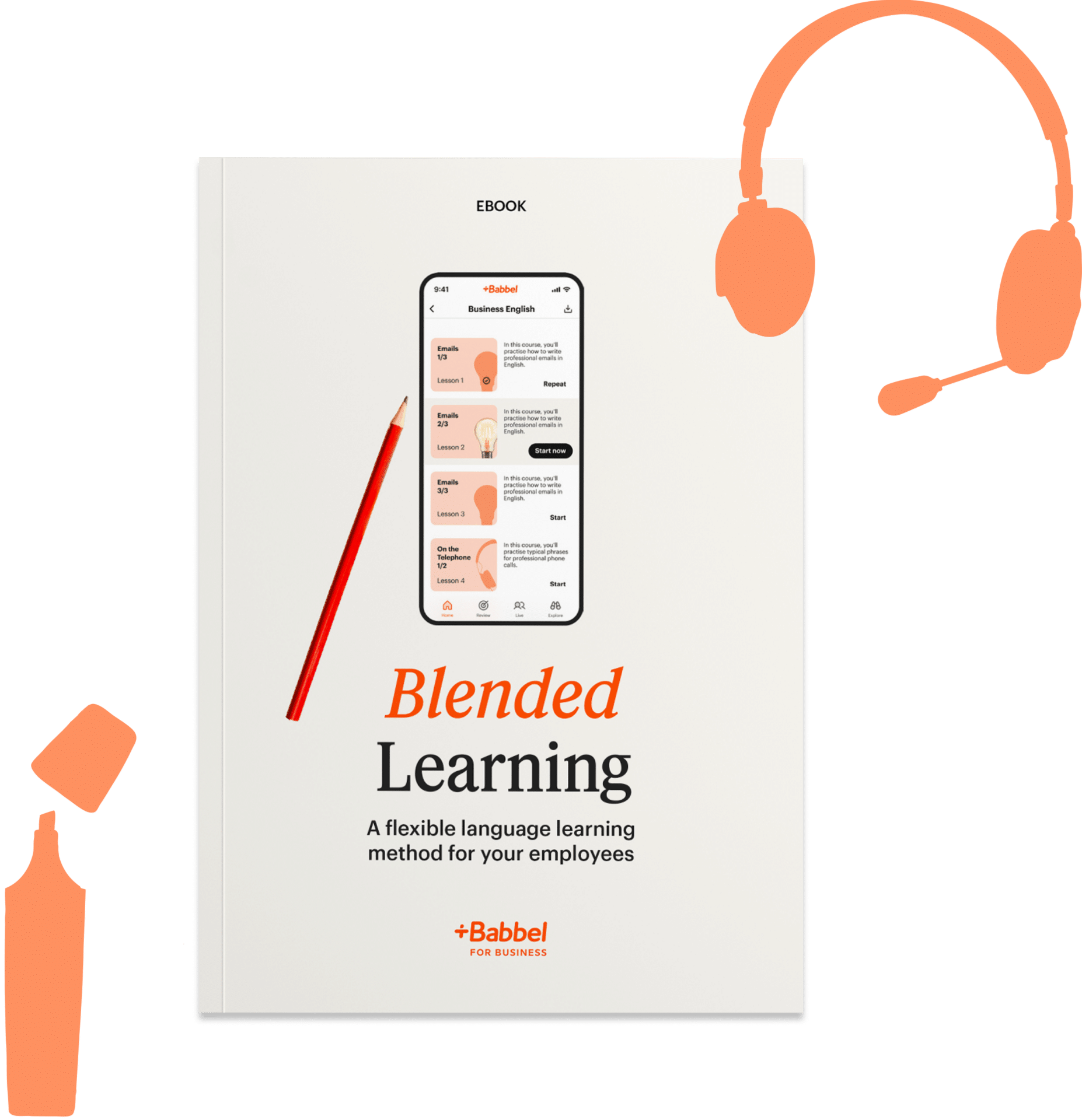In this article, you’ll find out about an experiment that took place at Babbel: One of our project managers used a blended learning approach to teach her native language Swedish to her fellow Babbelonians.
Elin Asklöv, originally from Sweden, is a project manager in Babbel’s Didactics team—the language experts who create and optimize our lessons. As a passionate polyglot (well, trilingual) herself, she delights in unraveling and understanding the intricacies behind language learning.
One springtime, something peculiar happened at Babbel’s Berlin HQ: Suddenly Germans, Colombians, Brits, and Italians could be overheard asking each other Hur mår du? Var bor du? and Vill du fika? when they met at the coffee machines. They were all part of a little experiment, in which Asklöv taught some of her colleagues Swedish—at Babbel, with Babbel. Keep on reading to find out how successful it was.
Table of Contents
- The Experiment: Teaching the Swedish Language with Babbel
- What Did the Students of Asklöv Learn in 12 Weeks?
- What Aid Asklöv Learn About Her Native Language Swedish by Teaching It?
- Why Blended Learning Is So Effective
Transform your workforce with effective language training
Discover how tailored corporate language learning programs can enhance communication and collaboration in your organization.
The Experiment: Teaching the Swedish Language with Babbel
Elin Asklöv: The twelve-week Swedish course took a blended learning approach—learning with the app, combined with traditional classroom instruction. My students would do a Babbel lesson unit each week and then we would meet every second Tuesday to speak Swedish and revise what they had learned with the app. This method is also called the flipped classroom, which means that the students prepare for class with, for example, online learning materials, and then the classroom time is dedicated to in-depth speaking activities and repetition. In this way, the whole concept of homework is reversed and redefined.
The greatest benefit of a blended learning course plan for teachers is definitely the time you save. When the students learn the vocabulary and grammar at home, you can leverage what an app can do best—training and revising vocabulary, for example—while benefitting from what a teacher can do best, like error correction and encouraging spoken communication. Learning with an app is also great because of the flexibility, enabling students to decide when, where, and how to learn and review. The classroom sessions can then be used in the most efficient way.
I would always begin the class by asking if there was anything the students didn’t understand in the lessons, or anything they’d like me to elaborate on. We then did quick recaps of the vocabulary and grammar points covered in the online lessons to get ourselves ready for the different conversation exercises. When everyone comes to class prepared, you can really focus on speaking skills—one skill that is particularly hard to develop when learning with an app all by yourself.
Learn more about the benefits of Babbel as a corporate benefit here.
What Did the Students of Asklöv Learn in 12 Weeks?
Asklöv: I must say I was surprised that so many people would be interested in learning Swedish, given how much else there is to do in one’s free time. But, in the end, 20 people signed up and about 10 courageous Swedish enthusiasts stayed until the bitter end. One beginner’s course and six classroom sessions later, I was surprised and delighted to see how much my colleagues could already actually do in Swedish. One of the highlights was a restaurant role play, in which the students ordered food, complained about it (mildly unrealistic though—most Swedes are way too socially awkward to complain), chatted with each other around the table, and were able to negotiate to pay the check—all in Swedish!
When you’ve just started learning a language, you have a very small active vocabulary. That’s why I was amazed to see how my colleagues combined bits and pieces from the different lessons into full, (almost) correct sentences. Language learners are a lot like children: They need a safe playground to try out new things. As an autonomous learner, finding that playground can be hard, but I believe in taking the language out into the real world as soon as possible – even if it just means speaking to yourself while cooking during the first weeks of learning. Getting used to your own voice in your new language will eventually give you the confidence to speak in real-life situations.
What Aid Asklöv Learn About Her Native Language Swedish by Teaching It?
Asklöv: I was able to use the classes as an indicator of how well the Babbel courses work. I also wanted to improve my skills as a teacher and, on a more general level, see if I could discover certain problem areas—in Swedish in general, in the way Swedish is usually taught, and in how it is taught and presented in our Babbel content. I was not that surprised by what turned out to be the biggest problem: pronunciation! Even though Babbel is one of the few language learning apps that explicitly teaches pronunciation rules, not just relying on listen-and-repeat exercises, it is still a difficult topic. Swedish learners need a lot of practice and feedback on pronunciation.
Now I’m looking forward to taking on the challenge of transferring some classroom methods for pronunciation training into the app lessons. For instance—in the very first lesson I told the students not to get hung up on the spelling of a word, but to focus on the pronunciation. This is a message I want the app lessons to convey as well!
Together, we also detected some parts of vocabulary that the app lessons are lacking in order to fulfill certain communicative goals. In the future, I will address these within the courses. We believe that communication is the main reason to learn a new language, and we structure the content around real-life situations like “ordering food” or “small talk about family.” Therefore, each of the classroom sessions was also dedicated to surviving a situation—to trying out the phrases learned and seeing how your conversation partner reacts. One of the students, Sam, said that the biggest advantage of going to class compared to only learning with Babbel was getting used to instinctively responding to questions in Swedish.

Why Blended Learning Is So Effective
Blended learning and “classroom flipping” are great methods for anyone who’s teaching and who wants to dedicate classroom time with their learners to review, support, and communicative activities. It is also a great method for learners of any language, and it’s actually a method that autonomous learners can recreate themselves by combining app learning with opportunities for free language production, such as chatting with a tandem partner or finding other learners—in order to find that playground and get conversational in your new language.

What are the benefits of blended learning for your company?
In this eBook, find out more about the benefits of a flexible language learning method for your employees and why blended learning is the most effective method to learn a new language.







